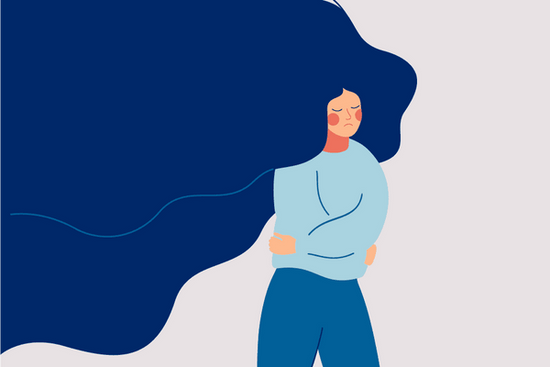
Names have power: the pros and cons of mental health labels
Pros and cons of mental health labels
Labels like ‘psycho’ or ‘schizo’ can hurt. We’ve workshopped alternative clinical terms
Andrea Polari, Clinical Associate Professor, Psychiatrist, Orygen, The University of Melbourne
Suzie Lavoie, Senior Research Fellow, Orygen, The University of Melbourne
It is common to hear people use stigmatizing, discriminatory ableist slurs and hurtful labels such as “psycho,” “schizo,” or “totally bipolar.” Others might minimize conditions by saying they are “a bit OCD” because they value structure and organization.
This everyday use of pseudo-clinical terms can upset young people struggling with these conditions. Worse still, it can stop them from seeking care.
Clinical terms can have the same effect. For our recent research, we worked with young patients, carers, and clinicians to develop a new mental health vocabulary that carries less stigma but remains accurate.
Read more: Labels belong on bottles, not people
Pros and cons of mental health labels
There are pros and cons of mental health labels. We know that he power of labels is real. Labels can provide concise and understandable descriptions of clinical and theoretical ideas. Diagnoses enable patients and health professionals to follow evidence-based advice for effective care because best practice guidelines are available for all labeled medical conditions.
In other words, naming a condition is the first step toward identifying the best treatment available. Labels can also help create communities of individuals with similar clinical descriptions and reassure individuals they are not alone.
On the other hand, labels can result in stigma and discrimination, poor engagement with services, increased anxiety and suicidal thoughts, and poorer mental health.
The process of posing a mental health diagnosis may treat an individual’s strengths or vulnerabilities as abnormalities and pathologize them.
For example, a young person’s vivid imagination and artistic drive – strengths that allow them to produce wonderful artwork – might be recast as a sign of illness. Or their experience of growing up in poverty and disadvantage could be seen as the cause of their mental illness, rather than environmental factors that may have merely contributed to it.
As such, clinicians should seek to understand a person’s difficulties through a holistic, humanistic, and psychological perspective prior to giving them a label.
"The language used in psychiatry is important because it provides an understandable and accurate way of describing clinical and theoretical concepts. The use of labels in psychiatry has often been associated with stigma and reduced engagement with clinical services."
New terms, new labels, changing approaches
In the past decade, there have been efforts to improve the naming of psychiatric disorders. Attempts to update psychiatric terms and make them more culturally appropriate and less stigmatizing have resulted in renaming schizophrenia in several countries.
Proposed terms such as Si Jue Shi Tiao (thought and perceptual dysregulation) in Hong Kong, and Johyenonbyung (attunement disorder) in South Korea, have been suggested as alternatives that carry less stigma and allow a more positive view of psychiatry.
These new terms, however, were generated by experts in the field. Consumers and clients within the mental health system have rarely been consulted, until now.
Thoughts from those ‘at risk’
Currently, “ultra-high risk (for psychosis)”, “at-risk mental state” and “attenuated psychosis syndrome” are used to describe young people at elevated risk of developing psychosis. But these labels can be stigmatising and damaging for the young people who receive them.
At Orygen, new, less stigmatizing ways to describe the “risk for psychosis” concept were co-developed with young people with lived experience of mental ill-health.
During focus groups, former patients were asked how they would like their experiences to be termed if they were believed to be at risk for developing a mental illness.
This discussion resulted in them generating new terms such as “pre-diagnosis stage,” “potential for developing a mental illness,” and “disposition for developing a mental illness.”
The terms were then presented to three groups: 46 young people identified as being at risk for psychosis and currently receiving care, 24 of their caregivers, and 52 clinicians caring for young people.
Most thought these new terms were less stigmatizing than the current ones. The new terms were still judged as informative and illustrative of young people’s experiences.
Patients also told us they wanted terms like these to be fully disclosed and raised early in their care. This revealed a desire for transparency when dealing with mental ill-health and clinicians.
We encourage young people to be part of the solution and to lead change for a better world.#youngfuturesmatter https://t.co/ebmiKuY7aw
— Orygen (@orygen_aus) March 17, 2022
Mental health labels can help you discover appropriate treatments
Although mental health labels can post some damaging risks and have negative associations, it is often important to put a name to your diagnosis in order to find the most effective solution. For example, if you have been suffering with long-term substance abuse, this will require a different type of treatment than certain anxiety disorders. It may be that a mental health iop is required or another type of treatment will be required to help the person work through their problems. Although it is not always necessary to label a mental health issue, it can be hugely effective when it comes to discovering treatment options and speaking with professionals about the best possible path in the future.
Names have power, labels have power
Labels can and should, be revisited when stigma becomes associated with them.
Co-designing new diagnostic labels with patients, their carers, and clinicians empowers all involved. Several similar projects are underway in Italy and Japan to include a cultural perspective in renaming terms related to young people at risk of developing serious mental ill health.
We hope to integrate and use more terms generated by young people in mainstream early intervention psychiatric services. We hope this will have a meaningful impact on young people’s mental health by allowing better access to care and less stigmatization.
"Names have power: the pros and cons of mental health labels" is republished from The Conversation under a Creative Commons license CC BY-ND 4.0











